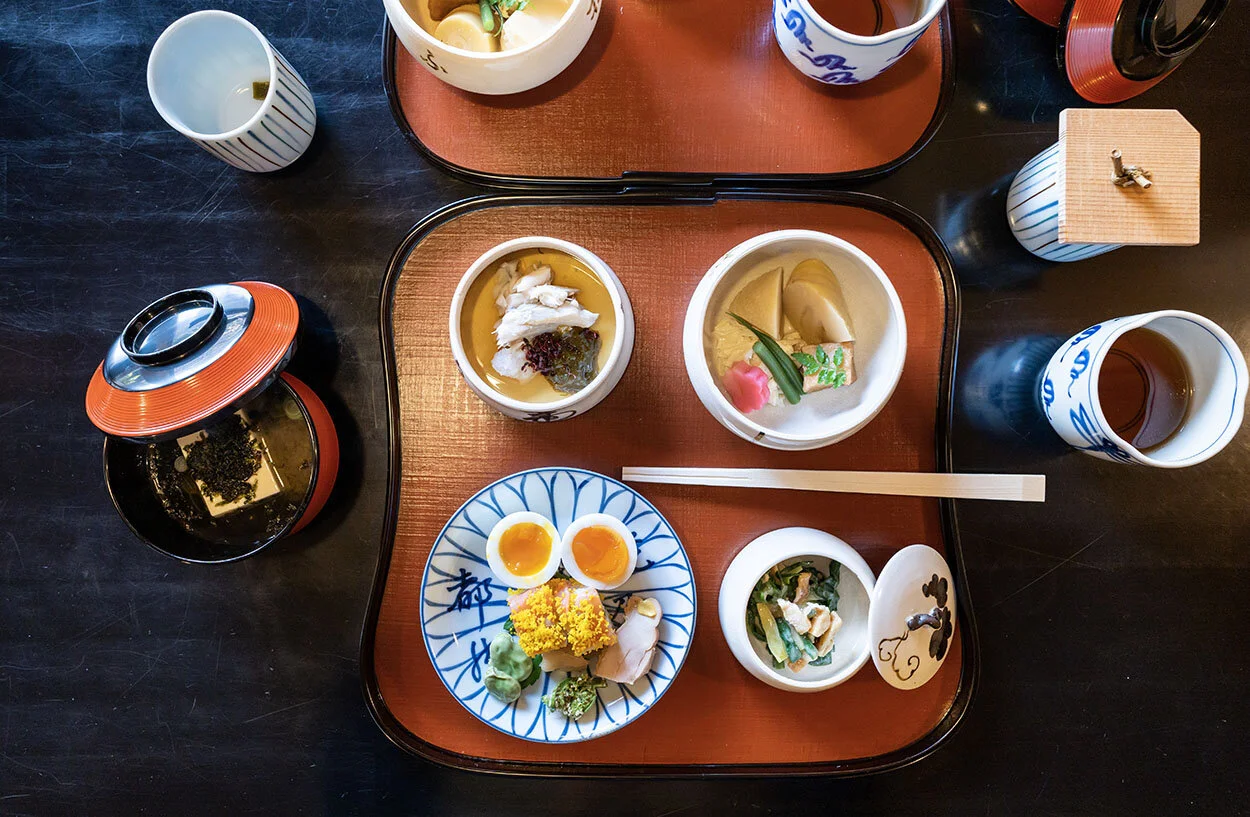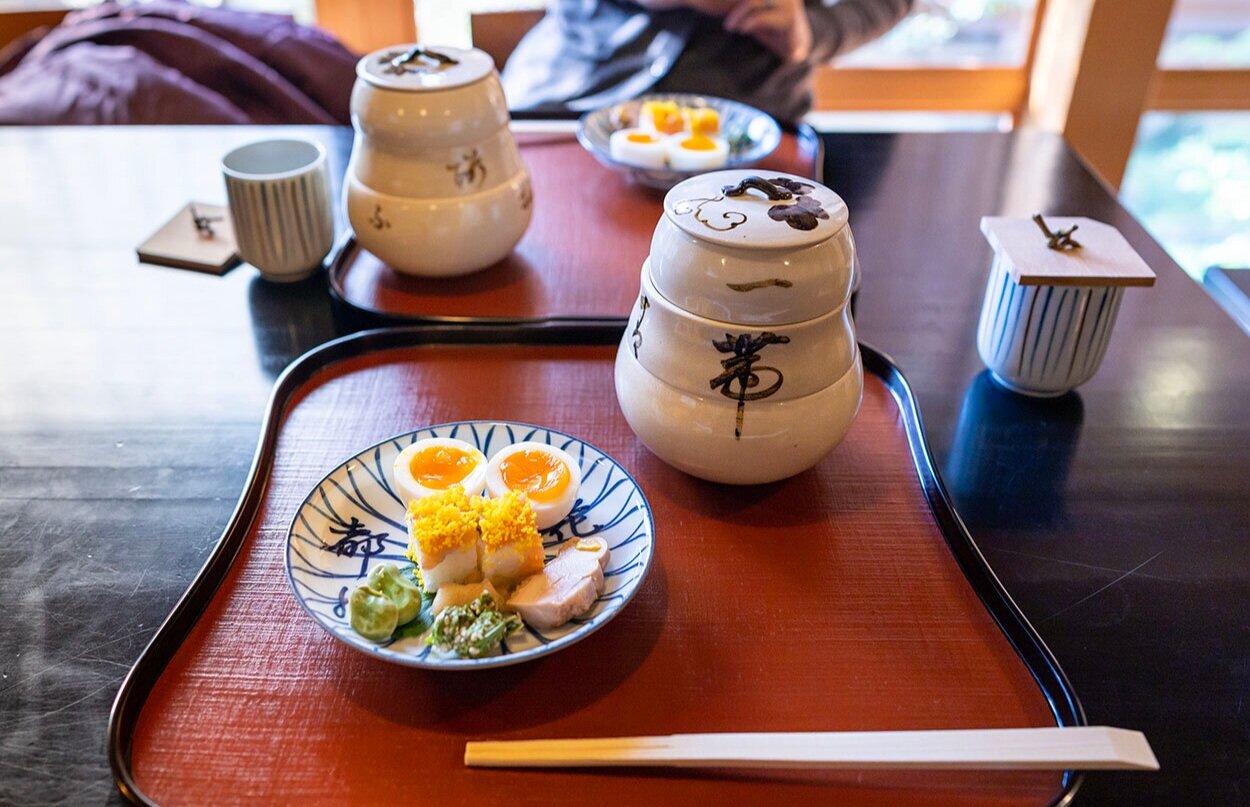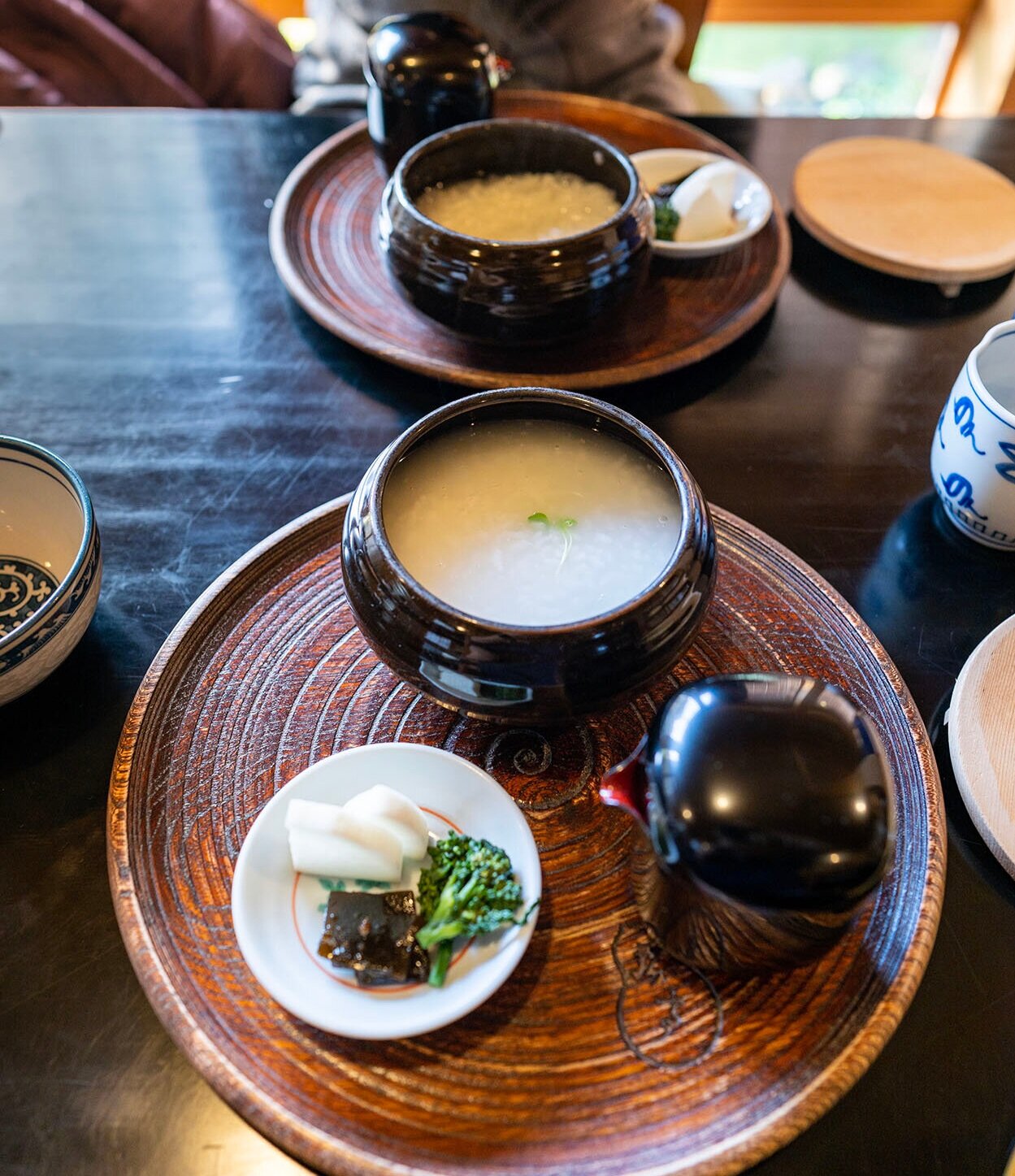Hyotei
400 Years of History
Hyotei’s humble origins as a tea house still hold great influence over the restaurant today. The original Kuzuya tea house structure, named for its thatched roof, still stands as a reminder of the restaurant’s history. Located just outside of the zen buddhist temple grounds of Nanzen-ji in Kyoto, Hyotei’s main building and annex are quite unassuming and can be easy to miss.
In keeping with Japanese aesthetic, the interior of the restaurant is comprised of several tatami mat rooms. There are sections within the annex building (where we dined) that have western style tables and seating, but even in this more modern area the dining room wraps around an interior Japanese garden.
Although it began as a simple tea house, Hyotei now holds a 3-star Michelin rating and is lauded for its kaiseki cuisine. Unfortunately our schedules did not allow us the opportunity to visit Hyotei for lunch or dinner. But, for those that are looking for a more casual (and much more affordable) experience at Hyotei, the restaurant’s asagayu rice porridge breakfast service is a great option. This service does book up in advance, so reservations are highly recommended. I was able to secure one using the concierge service provided by my AMEX Platinum card.
More Than Porridge
More commonly referred to in Japan as okayu or congee, ridge porridge in its basic form is simply rice and water cooked for an extended period. Variations of the dish will often play with different rice-to-water ratios which impact the viscosity of the final product. It’s a simple, homey dish which is easy to eat and so is a favorite among children or the elderly. Since the dish is so simple, it’s also a go-to dish for those who are feeling sick as its easy to eat and digest.
A mini-"kaiseki" presentation of dishes to accompany the rice porridge
Hyotei’s asagayu breakfast up-levels the typical rice porridge accompaniments of pickled vegetables with a whole miniature kaiseki experience. Kaiseki meals are generally multiple courses that incorporate seasonal ingredients. Hyotei condenses this down to a few of the traditional elements you’d find and serves them all at once. The three level tower comes apart to reveal three different dishes, creating an entire spread for the diner to enjoy with their porridge.
A variety of small dishes including soup, egg, pickles, and pressed sushi
Although served altogether and as “side dishes” to the porridge, each of these small presentations were deftly prepared and delicious. In keeping with kaiseki tradition, seasonal ingredients like the fish, bamboo shoots, and fava bean are incorporated. While I enjoyed each of these dishes, the standouts were the fish (top left of the tray) and the egg. The fish was very tender, its sweet taste enhanced by a punch of umami from the dashi broth it was served in. The egg is a Hyotei speciality, supposedly cooked using the same method that was created hundreds of years ago in the early days of the restaurant’s tea house.
The rice porridge is served with tsukemono (pickles) and a shoyu dashi sauce
Simple and comforting rice porridge. I ate so much of this growing up, albeit a variation where tea is added during cooking. Hyotei’s iteration is every bit as comforting and warming as I have come to expect of this dish. What is a little different is the warm sauce that is served with the porridge. This thick, shoyu based sauce adds salt and umami to the porridge. Since our American palates are accustomed to a lot of salt (we over salt many things compared to Eastern cooking standards), I did find myself adding more of the sauce to my porridge than other tables filled with local diners.
Although I was disappointed I couldn’t enjoy a full lunch or dinner service, which are where Hyotei undoubtedly earns its 3 Michelin stars, I was glad I got to try this breakfast. Being able to enjoy an elevated take on traditional comfort food within a restaurant with so much history and longevity was a great way to start a day in Kyoto. I also appreciated Hyotei’s insistence on remaining seasonal with its selection of ingredients. The standout elements of breakfast were delicious. The egg in particular, with its preparation method now hundreds of years old, was a reminder that food needn’t be overdone or modern to taste delicious.
Service was attentive and timely. Since this was a breakfast service, I had hoped it would not be an overly long affair as I had a private tour booked for shortly after breakfast. We were out in a reasonable amount of time, but never felt rushed.
The atmosphere of Hyotei’s annex building is a mix of western and Japanese. The tables were upright with western-style chairs, but the decor and the inner garden were decidedly Japanese. Being just a stone’s throw from one of the oldest temples in the area also adds to the overall traditional old-Japan charm of Hyotei.
Breakfast at Hyotei will set you back ¥4,500 (~$41 USD). While this is definitely on the pricey side for breakfast, I felt the value was quite high. There were a variety of dishes, all cooked with quality ingredients. The entire meal was filling and I walked away feeling I had received my money’s worth.
Hyotei
35 Nanzenji Kusakawacho, Sakyo Ward
Kyoto, 606-8437, Japan
Phone: +81 75-771-4116
http://hyotei.co.jp/en/










